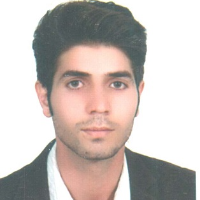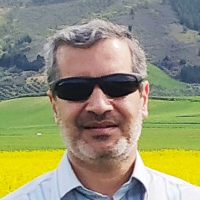Simulation and Estimation of the amount of Dust in Industry with Perceptron Multi-layer Neural Network Model (Case Study: Sabzevar Cement Factory)
Distribution of air pollutants in industrial units is one of the issues that always affects the environment and ecosystem of adjacent areas. Air pollution is an inevitable part of modern life, and the knowledge of air pollution existed in the past and must be continued to make policies. The cement manufacturing process produces millions of tons of byproducts each year, including dust, toxic gases and heavy metals, which will pose health and respiratory hazards and environmental pollution. Therefore, awareness of pollutant concentrations can be used as key information in pollution control programs. There are still many activities to complete effective control strategies for the prevention, continuous improvement and application of modern technologies to substantially reduce dust in the cement industry. The amount of dust produced can be significantly reduced using modern technologies such as cyclones, bag filters, and electrostatic filters. There are various types of dust in the cement industry including, raw materials such as limestone, marl, clay, iron ore, mixing dust, dryer outlet dust, furnace outlet dust, clinker dust, gypsum dust, and cement dust. In this study, the purpose of dust is the furnace outlet dust. Air pollution is a very complex process that depends on many factors. Therefore, it is very difficult to predict such data with nonlinear dynamics and to determine how the pollutants are to be dispersed and propagated in the atmosphere, which will also be extremely costly. Then, each section can be modeled using this data and solving the equations involving atmospheric processes in the form of data networks. Air quality modeling can be considered as a suitable tool for predicting future air quality and determining emission control strategies. In recent years, one of the best models that has shown good performance in pattern and control modeling is intelligent systems, which include neural networks. Multilayer perceptron neural networks are a model for information processing made by mimicking biological neural networks such as the human brain. The key element of this model is the new structure of its information processing system, consisting of a large number of elements (neurons) with strong internal communications that work together to solve specific problems. Artificial neural networks by empirical data processing transmit knowledge by the law behind the data into the network structure; this is called learning. Ability to learn is essentially the most important feature of an intelligent system. A system that can learn is more flexible and easier to program, so it is better responsive to new problems and equations. Artificial neural networks have been employed for various purposes such as simulation, pattern recognition, classification, prediction, and optimization in engineering sciences. The ability of these networks to map between input and output information with acceptable error has made this method a useful tool for modeling engineering processes. In the basic state, a neural network consists of three layers, input layer, hidden layer, and output layer. Also, each layer contains a number of neurons. In the neural network, neurons are active (on or 1) and inactive (off or 0) and each wing (synapse or communication between nodes) has a weight. Positive-weighted wings trigger or activate the next inactive node, and negative-weighted edges inactivate or inhibit the next inactive node (if it was active). To calculate the output, each of the previous layer inputs is multiplied by the network weights and summed with the corresponding bias. Sabzevar city is located on the west of Khorasan Razavi province in Mashhad-Tehran highway. This city is bounded by Esfarayen in the north, Neyshabur in the east, Kashmar and Bardeskan in the south, Shahroud city in Semnan province in the west. Based on the latest country divisions, Sabzevar has five Bakhsh including, Markazi, Roudab, Khoshab, Davarzan, and Sheshtamad. Sabzevar Cement Factory is one of the sources of dust emission in southwest of Sabzevar in Roudab Bakhsh. The plant started operating on an area of 150 hectares, with a capacity of 3400 tons per day, with Portland cement type 2, 1-325, and 1-425 from October 2007. The plant also uses Bag filter, Bag house, and electrostatic filters for dust, and allocates an area of 50 hectares to build a green belt to protect the environment. The purpose of this research was to predict the amount of dust from the main chimney (baking furnace of Sabzevar cement plant) using a perceptron neural network model.
In this study, first, the amount of dust emitted from the main chimney of Sabzevar cement plant was studied through field surveying in three seasons in 2017-18 by the Experts of Mashhad Environmental Trust Company (Pak Afarinan Avizheh). All sampling and measurement procedures were in accordance with the requirements of the Iranian Environmental Protection Agency. 180 dust samples were collected and then, compared with Iranian Environmental Protection Agency standards and the US Environmental Protection Agency (EPA). The parameters of output gas velocity parameters, temperature, voltage, fuel, and furnace feed were used as perceptron neural network input. Perceptron neural network with 5 neurons as input in the first layer, 10 neurons in the hidden layer, and 1 neurons in the hidden layer. The Levenberg-Marquardt algorithm was used to train the network, which is one of the most used and fastest optimization algorithms. Perceptron neural network is one of the supervised learning methods. To evaluate this method, the data were divided into two training and test groups. The model was trained on the training data. The model error was estimated on the test data. In order to include all data in both training and test groups, k-fold cross-validation method with k = 5 was used. In this way, the data were divided into 5 sections and at each run, 4 groups were considered as training and 1 groups as testing. The network with the least error over the test data was selected. The amount of dust concentration was estimated based on input parameters with the above mentioned neural network (input, hidden and output three layers) and above method. In order to observe the effect of each of the input parameters on the estimation of dust concentration with the perceptron neural network, all possible scenarios should be considered. Since five input parameters are selected, so 25, there are 32 subsets, which results in 31 cases with the removal of the null set. The perceptron neural network was run with 10 neurons in the hidden layer and one neuron in the output layer on each mode (subset). Thus, all subsets of one-member, two-member, three-member, four-member and five-member problem parameters were investigated. In each case, the number of input layer neurons is equal to the number of selected parameters. For each subset of input parameters a neural network was constructed and the amount of dust was estimated. The subset that had the least error in predicting dust concentration was selected as the influencing parameter. For each subset, 5 models were trained, validated each time, and the model with the least error mean squared on the test data was selected. Correlation coefficients and mean squared error were used to evaluate the accuracy of the model in predicting dust concentration. All implementations were performed in MATLAB software.
The results showed that the perceptron model has a good accuracy in predicting the dust concentration of Sabzevar cement plant. Perceptron neural network model was able to Show the correlation coefficient as much as 0.98168 and 0.98249, and Mean square error as much as 0.709 and 280, respectively in two modes of using all parameters (output gas speed, temperature, voltage, fuel, and furnace feed) and the influential parameter (temperature). This indicates a higher correlation and lower error of the perceptron neural network model in using only the temperature parameter than in the prediction of dust concentration in all parameters.
Achieving environmental pollution standards in the cement industry requires proper design and increased efficiency of dust collecting equipment to reduce dust particles. Nowadays, due to the increasing development of cement factories to produce cement needed in the country as well as the growing importance of environmental considerations in various industries, especially the cement industry, the need for better and more efficient technologies to control pollutants and wastes from cement plants has become more and more prevalent. The cement industry is one of the industries that is always referred to as the pollutant of the environment. Although in recent years the industry has tried to meet the environmental standards required by modernizing its equipment and machinery, it is still one of the most important contributors to air pollution. The results of this study showed that the, this model can be a suitable and fast way to better manage industrial dust concentration and ensure quality monitoring results and reduce costs because of the high capability of perceptron neural network in predicting dust concentration.
-
Challenges and Requirements of Persian Language Support in Citation Software
*
Journal of Studies in Library and Information Science, -
Analysis of the sensitivity of air pollution emissions of a steel factory to the prevailing wind direction
Zahra Mansurian, *
Human & Environment, -
Developing a Risk Assessment Model for Respiratory Exposure to Toxic Chemical pollutants in one of gas refineries in South Pars using a Combination of AERMOD and SQRA Methods
*, , Sonouran Zamani
Journal of Health and Safety at Work, -
Performance of adaptive neural-fuzzy inference system in predicting household waste production in Tabriz, Iran
Samira Bagheri, *, Seyed Alireza Afshani, Vahid Mousavi
Iranian Journal of Health and Environment, -
Modeling NOx, CO, SO2 and PM emissions from Sabzevar cement plant using SCREEN3 software
*, ,
Occupational Medicine Quarterly Journal, -
Prediction of the Air Quality by Artificial Neural Network Using Instability Indices in the City of Tehran-Iran
Razieh Farhadi, Mojtaba Hadavifar *, Mazaher Moeinaddini,
Journal of Civil Engineering, Autumn 2020




